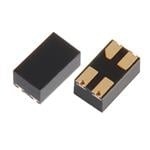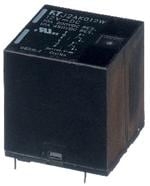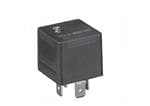What Does Relay Mean?
Relay is one of the simplest forms of automation, but it can also be used to create complex and powerful systems. The relay has two main components: the coil (which is made from an electromagnet) and the armature or set of moving contacts that complete the electrical circuit when activated by the coil’s magnetic field.
A relay is an electrically operated switch that you can control with a small amount of current. Relays are used in many applications, including home appliances, household electronics, industrial equipment, and robotics.
The two main types of relays are electromechanical relays and solid-state relays. Both types come in a variety of sizes and designs. You can choose a relay based on its purpose or your application needs.
For example, if you’re building a robot or an automated system that needs to connect to electricity. You’ll probably want to use a solid-state relay like EASYIEE Solid State Relays TLP3440TPF with built-in protection against electrical surges or spikes.

If you’re building a smaller device such as a remote control car or robot arm. You can use an electromechanical relay such as the EASYIEE Low Signal Relays series of basic low-voltage DC relays.
How Does Relay Work?
Relay is an electromechanical switch that uses an electromagnetic coil to open and close a circuit. The relay has three terminals: the common terminal, the normally closed terminal, and the normally open terminal.
A power relay is an electrically operated switch. This power relay like General Purpose Relays FTR-J2AK006W is used to control high-power devices, such as electric motors or air compressors. In most cases, power relays are used in applications where the load to be controlled is too large for normal switches to handle.

This relay is used to control high voltages or currents. It has a latching solenoid which helps in keeping the contacts closed until power is removed from it.
Power relay operates on the same basic principle as other types of relays. When current flows through the coil of an electromagnet, it generates a magnetic field that attracts a core attached to an armature.
The armature can then be moved into different positions by varying the strength of the current flowing through the coil. In this way, an electromagnet can be used to control mechanical movement similar to how a solenoid works.
For power relays to work properly, they need both an input signal and an output signal. The input signal tells the relay what action should take place when it receives an electrical impulse from its control circuit. The output signal tells the device what action should take place once it receives an impulse from its control circuit.
The common terminal is connected to the positive supply voltage of your circuit. When you apply a voltage to the coil, it closes the relay making it switch on. To turn it off, you need to remove that voltage from its coil.
1. Latching Relay
Latching relays have two states: on and off. When an electrical current passes through the coil it closes the contacts inside the relay and holds them closed until power is removed from the coil or until another signal overrides it.
This kind of relay is often used for simple electronic circuits where you want something to turn on when one thing happens and then turn off when something else happens. Latching relays are also useful if you want something to happen once every time something else happens.
2. Non-Latching Relay
A non-latching relay is a relay with a normally-open contact that doesn’t stay open when the relay is not energized. This allows the circuit to turn on or off quickly without having to hold the button down for any length of time.
The relay will turn off when power is removed from its coil and must be reset manually before it can be triggered again. This relay is used for low-voltage applications like home appliances and small motors etc.
Where Can Relay Be Used?
Relay has several applications in the world of electronics. Probably the most common use for relays is as switching devices. It’s so useful because it can be controlled remotely and switched on and off many times without wearing out like other types of switches.
A common example of a relay is a car horn switch like EASYIEE Automotive Relays V23234A1004X050-EV-100. When you press on your car horn button you’re activating a relay that completes an electrical circuit that allows current to flow through your car’s wiring system and activate your car horn so you can honk at someone who cut you off in traffic.

Relay is also used as an amplifier, to activate or deactivate certain circuits according to an applied voltage. As times by delaying the activation of a circuit until a specific time has elapsed.
Relay has many other applications too, including controlling the speed of fans and motors and switching high-voltage AC signals into low-voltage DC signals.
Relay is also used extensively in industrial settings where they can control heavy machinery or manufacturing equipment. It’s typically used in industrial machines, such as printers or photocopiers, as well as in other high-voltage applications such as traffic lights and telephone systems.
Why Use Relay?
A relay is a simple, reliable switch used to control the flow of electricity. They’re essentially switches that use electromagnets instead of springs.
To Replace Mechanical Switches:
Relay doesn’t get worn out over time as mechanical switches can — they’re much more durable and reliable. For this reason, they’re often used as replacements for mechanical switches in automation systems.
To Provide A “Fail Safe” Mechanism:
If something goes wrong with your automation system, you never want it to shut down completely. At best this would be inconvenient but at worst it could cause serious damage or injury.
Relay can be wired up so that if any part of the circuit fails (for example if there’s a short circuit). For preventing any further damage from occurring. The relay will open and break the connection between the power supply and load automatically.
To Detect Various Conditions:
For example, when your coffee maker detects that your coffee has finished brewing by using a temperature sensor inside the carafe. And then when your car’s airbag sensor detects if there is an impact so it knows when to trigger itself during an accident. Whatever, when your computer detects if there is something wrong with one.
How to Choose Relay?
If you want to choose the suitable relay for your projects, you need to know the below information. And according to your requirement, selecting the perfect one. Or on the other hand, if you don’ t know how to choose, you can find this company EASYIEE help.
There Are Three Terminals Of The Relay:
An input terminal, which receives the signal to be switched on or off. It’s the one that turns the relay on when it’s connected to power and off when it isn’t.
An output terminal, where the current flows when the relay is activated. It does just the opposite which connects power when the relay is off and disconnects it when the relay is on.
A common terminal, where both input and output currents meet. So you can’t use both at once unless you connect them separately through separate wires.
There Are Two Types Of Relay:
Electromechanical Relay
The electromechanical relay was one of the first types of relays created. This type of relay uses magnets along with metal contacts to open or close circuits inside the unit itself. These types of relays can be found in older cars where they control things like windshield wipers and lights on the dashboard.
Mechanical relay has moving parts while the solid-state relay contains no moving parts (they use transistors instead). Mechanical relay is more common than solid-state one because it’s cheaper but it can be noisy and wear out over time.
Solid State Relay:
Solid state relay (SSR) is similar to electromechanical relays but uses transistors instead of magnetism to control circuits within them. SSR also comes in many different shapes and sizes so it can be used in many different applications with varying power requirements.
A solid-state relay is generally used for higher voltages and currents than a mechanical one. Because it doesn’t contain moving parts that could break down over time.
Conclusion:
In a relay, an electromagnet is activated by a current passing through an electromagnet coil. It’s a device that switches high voltages on and off by means of an electromagnet. Relay is used in many applications, such as industrial control systems, circuit breakers, home appliances, automobiles, and others.
Relay is the best choice for you to control your electronics. You can search and choose the correct one by following this company EASYIEE or making a call to them, they will help you find the product. In addition, they also carry other products, like smart home products.





 2022-11-24
2022-11-24 


